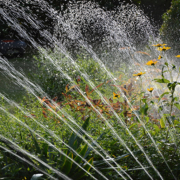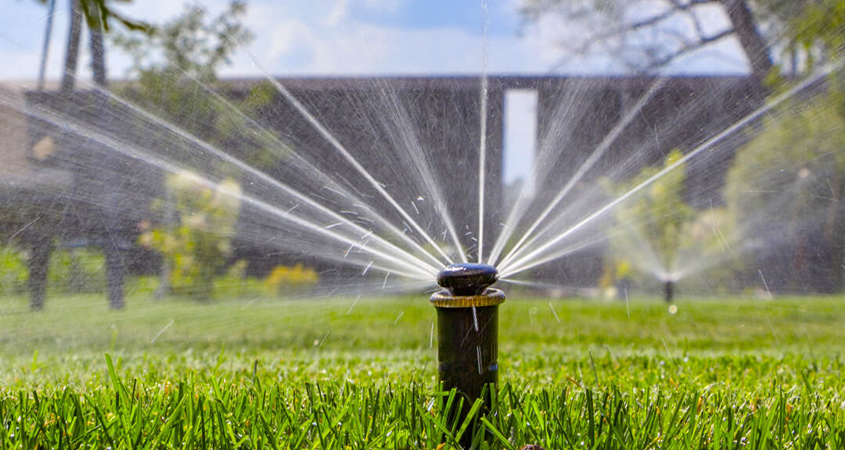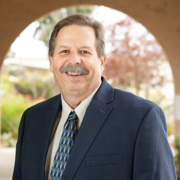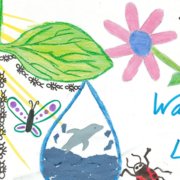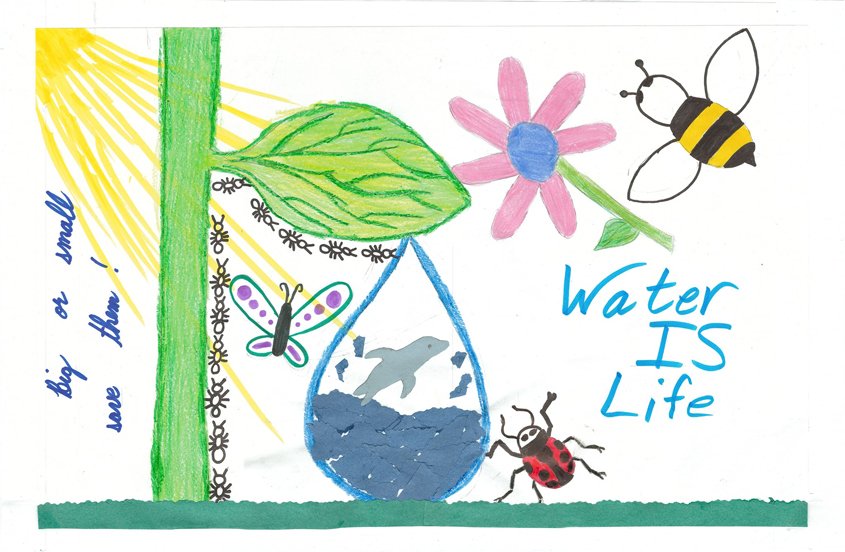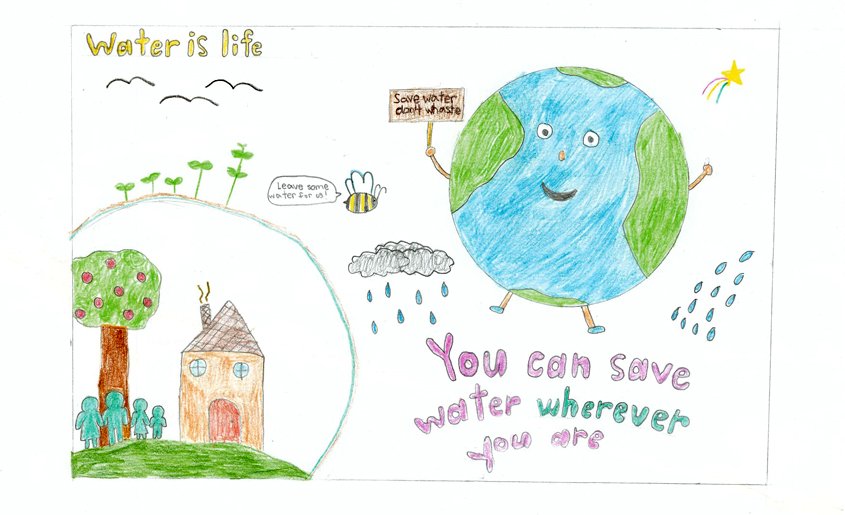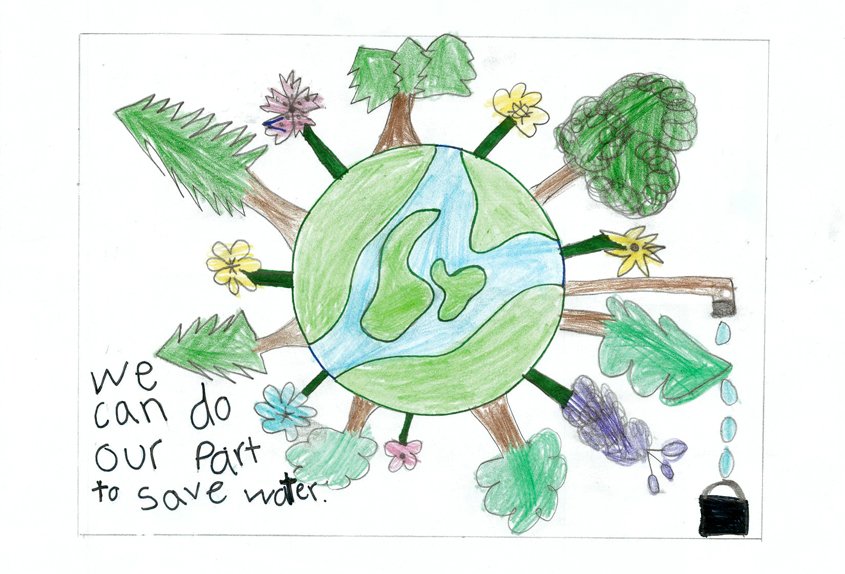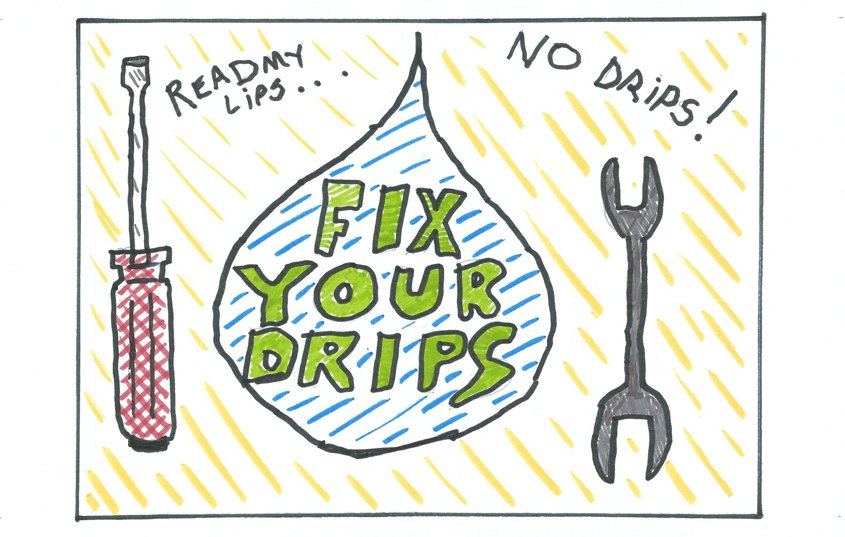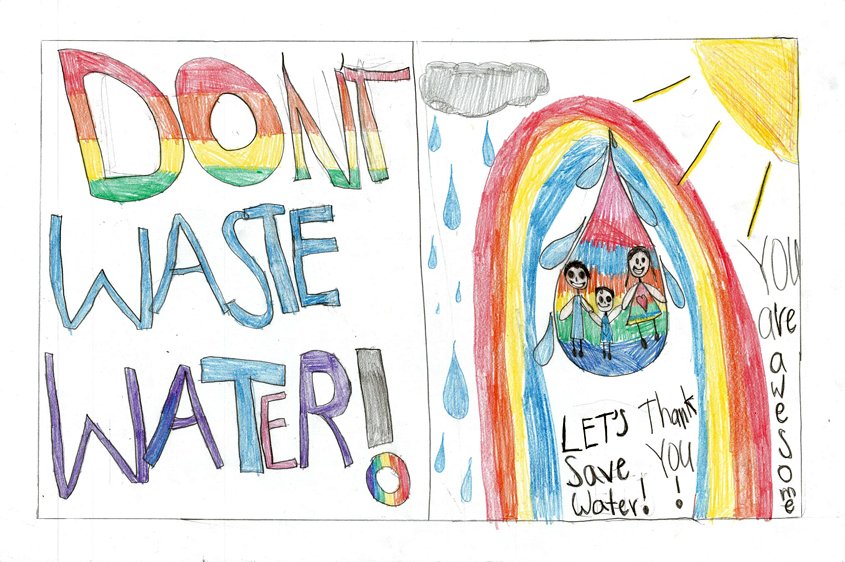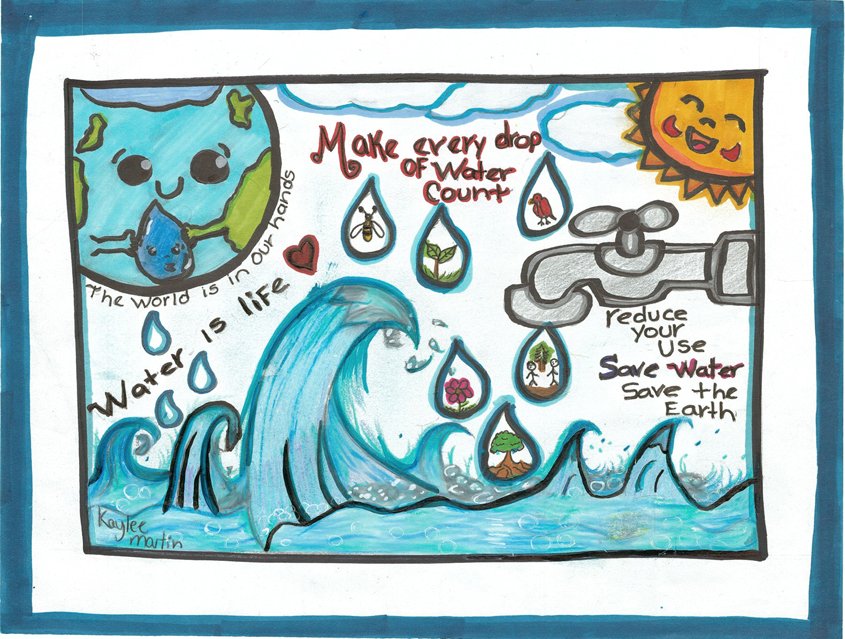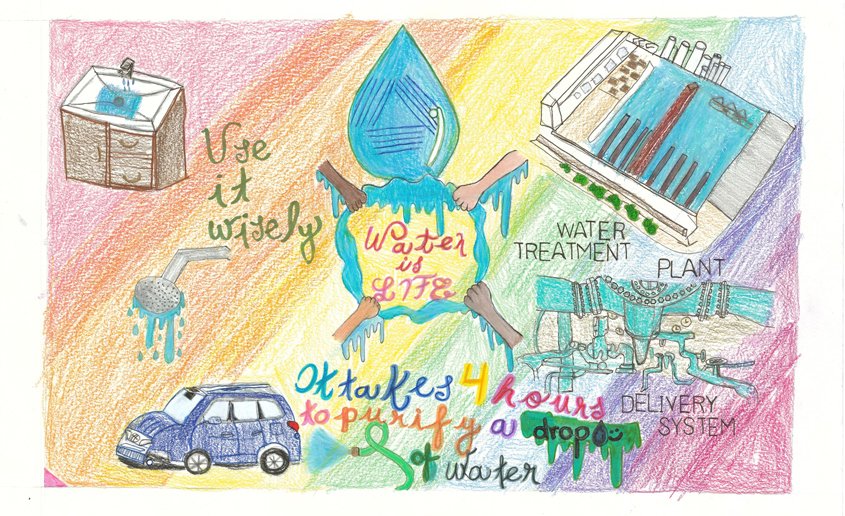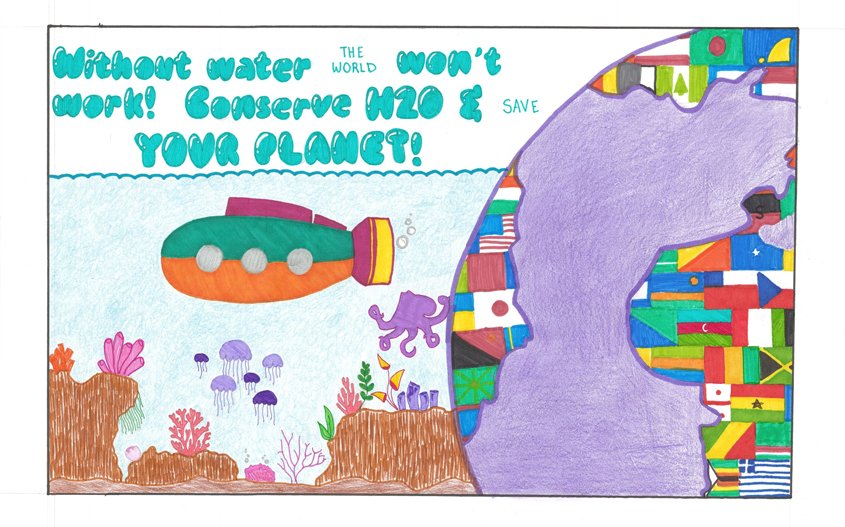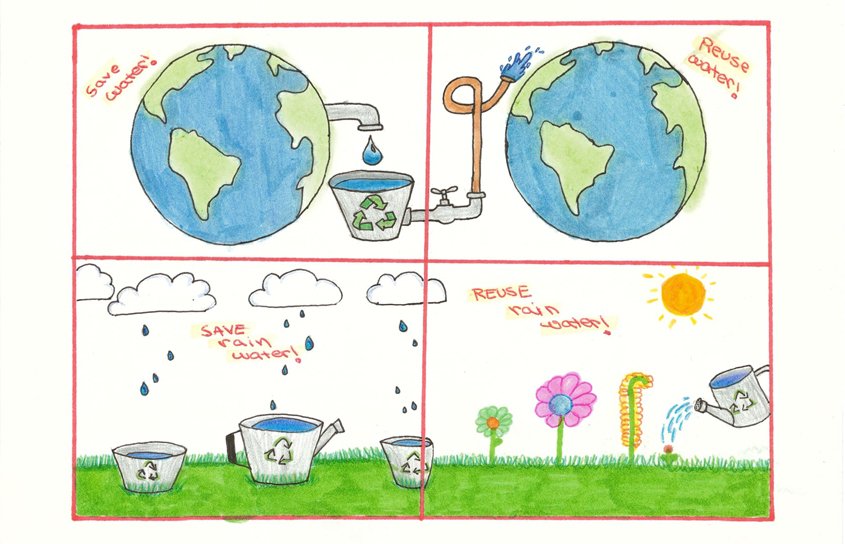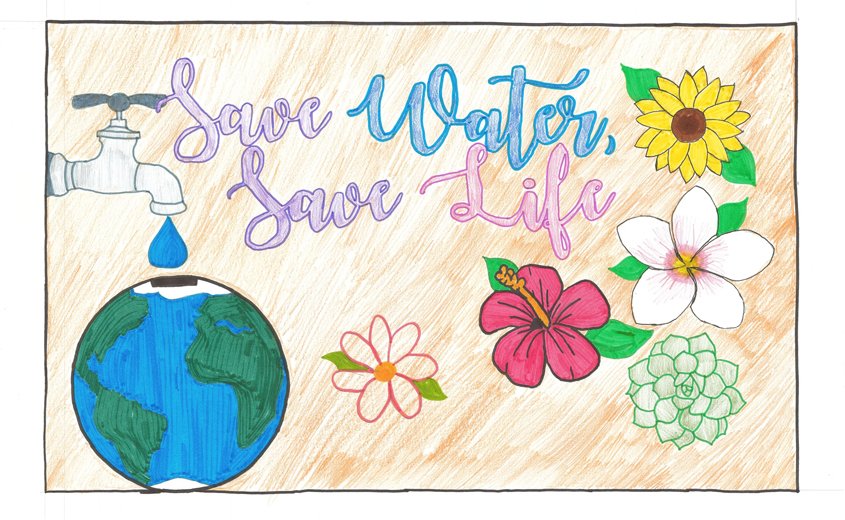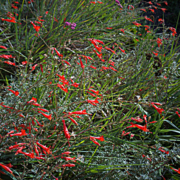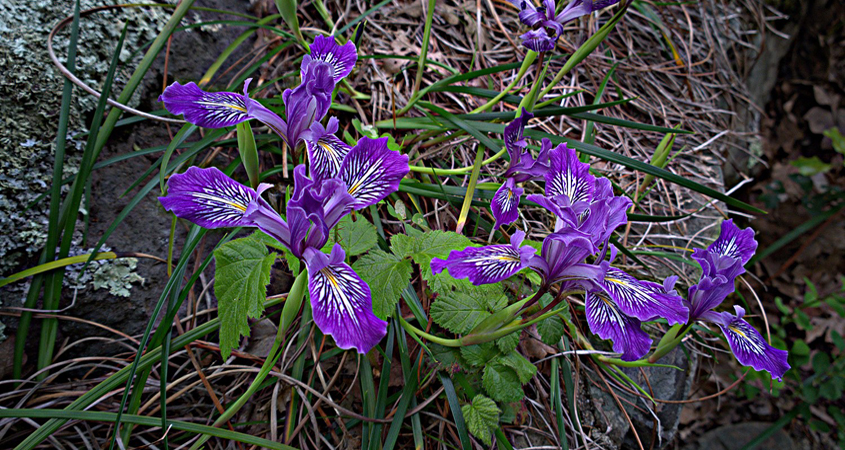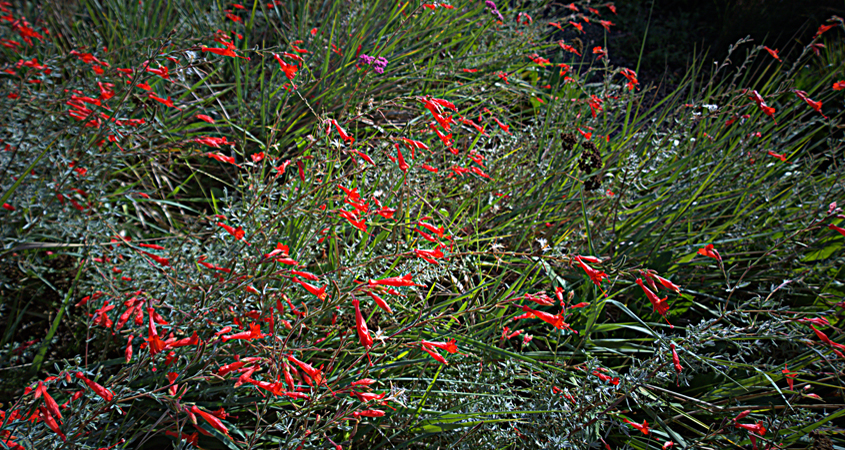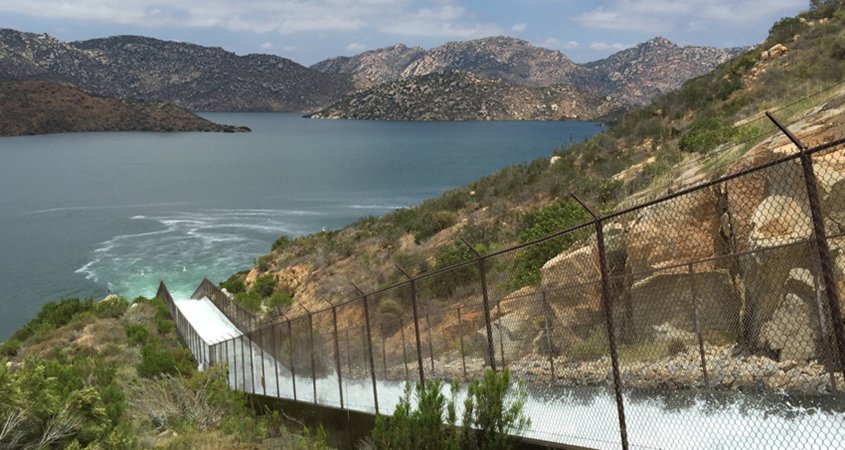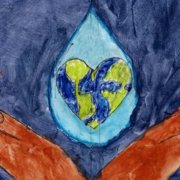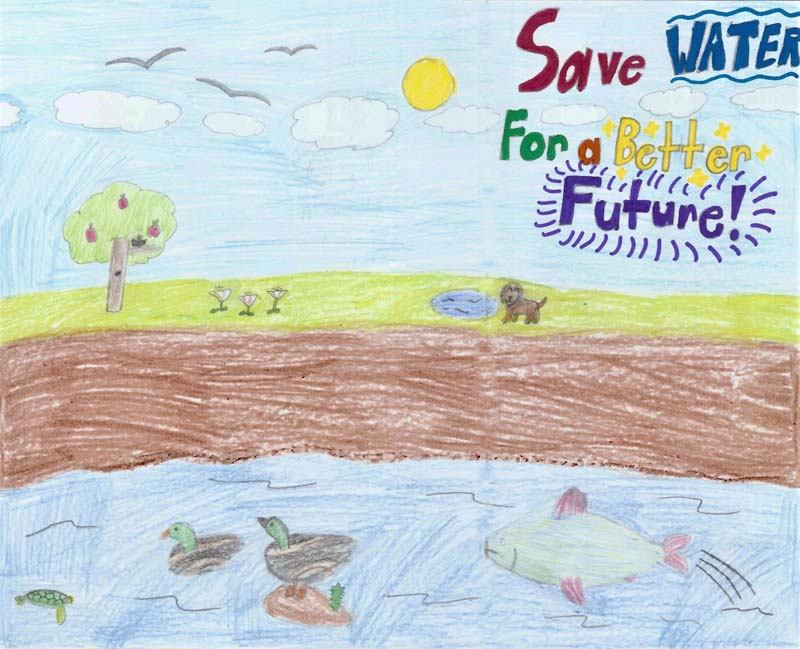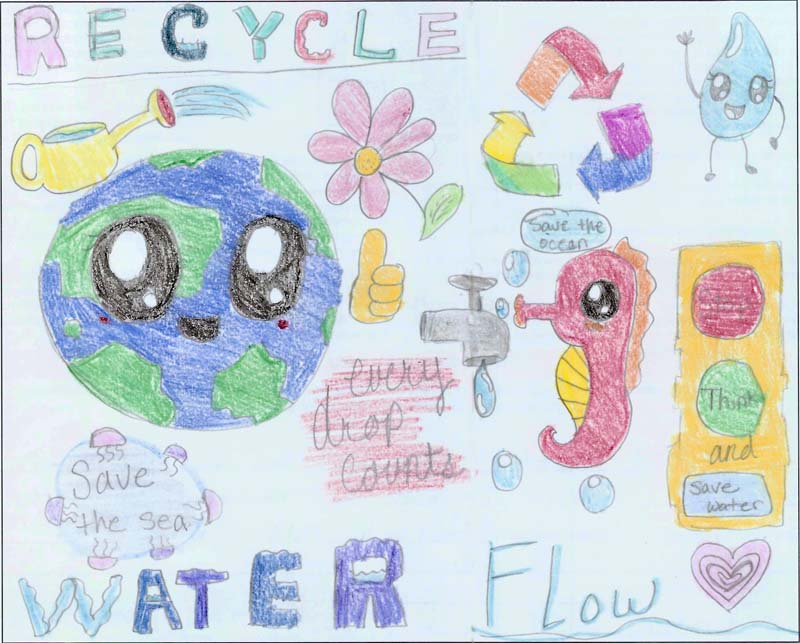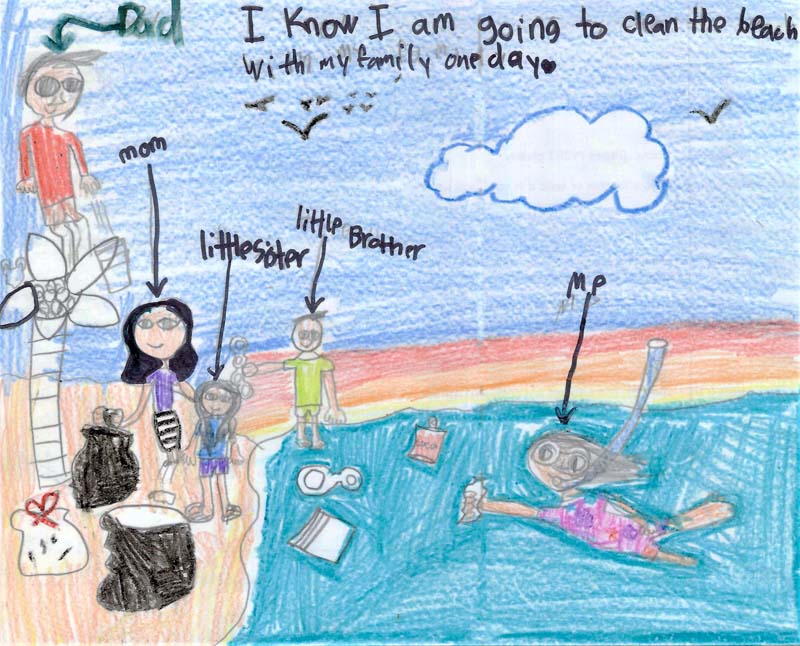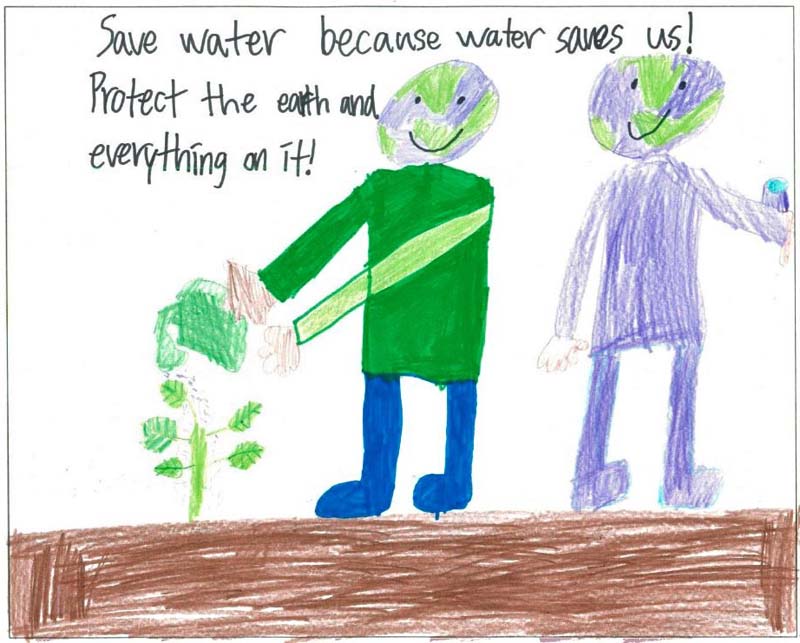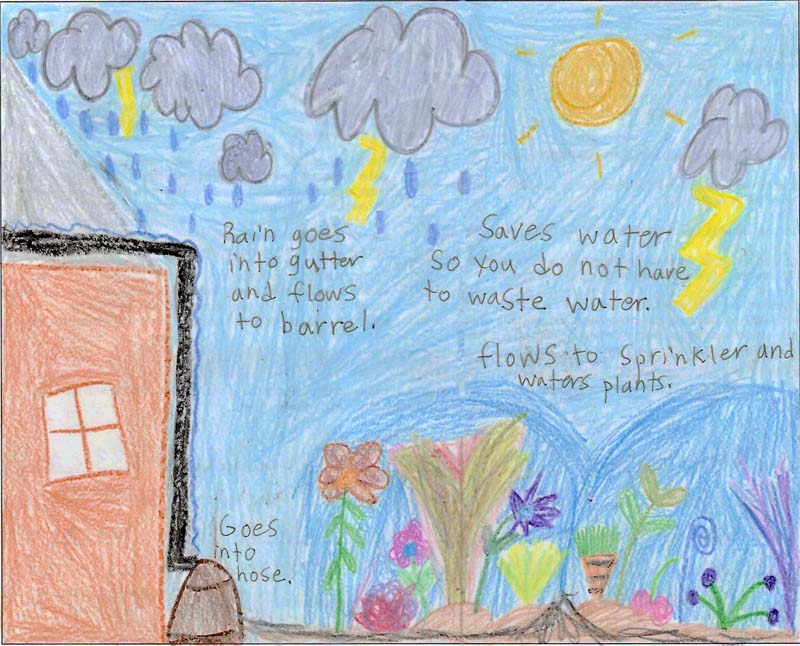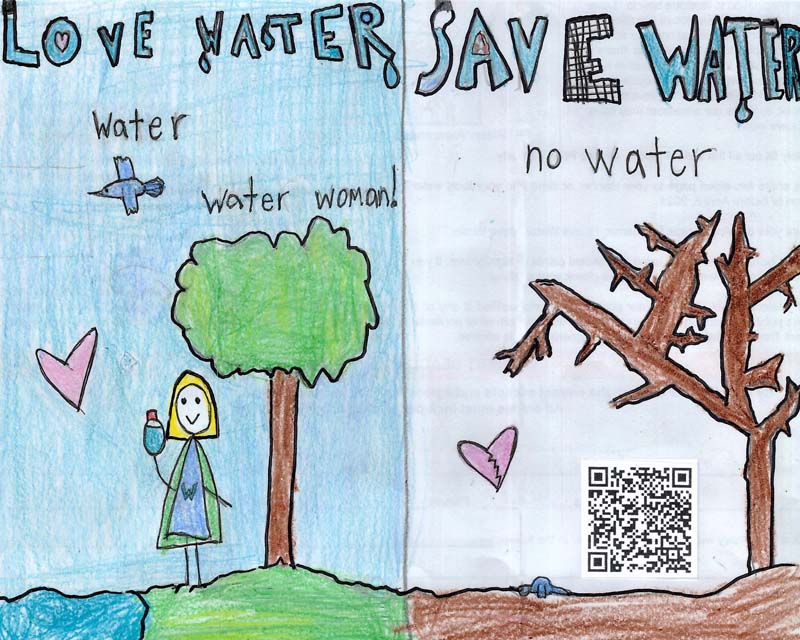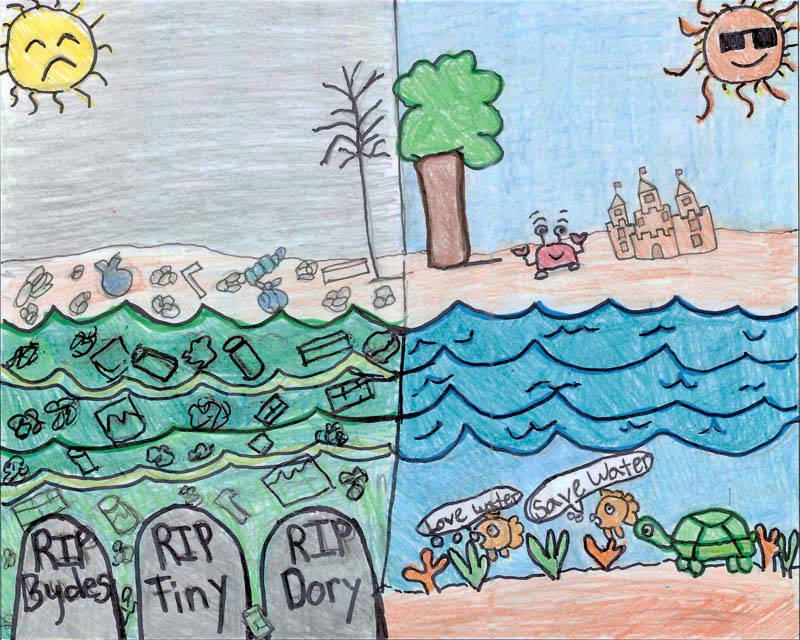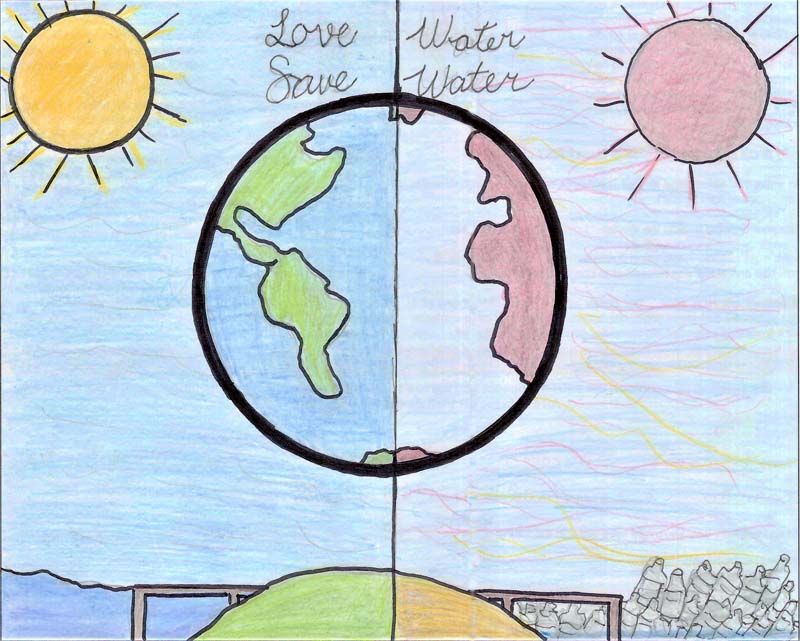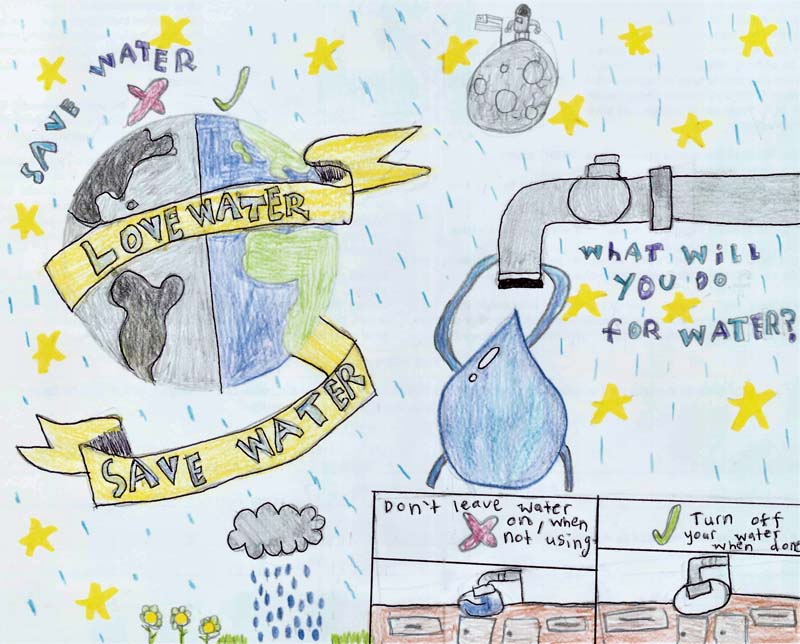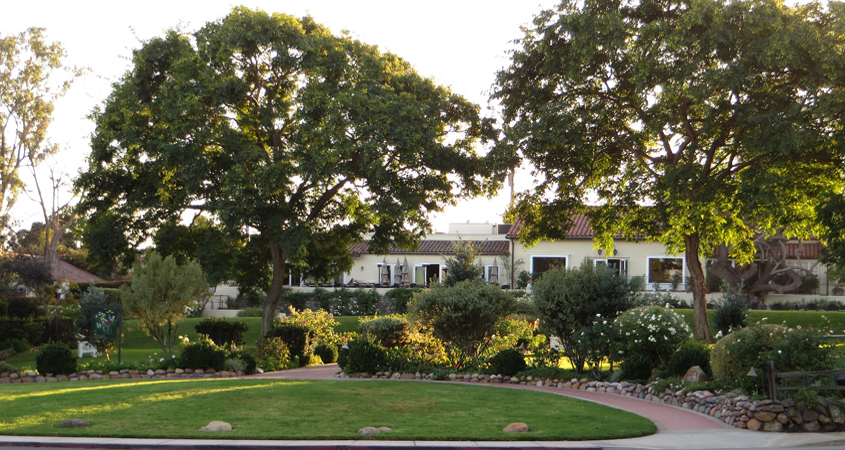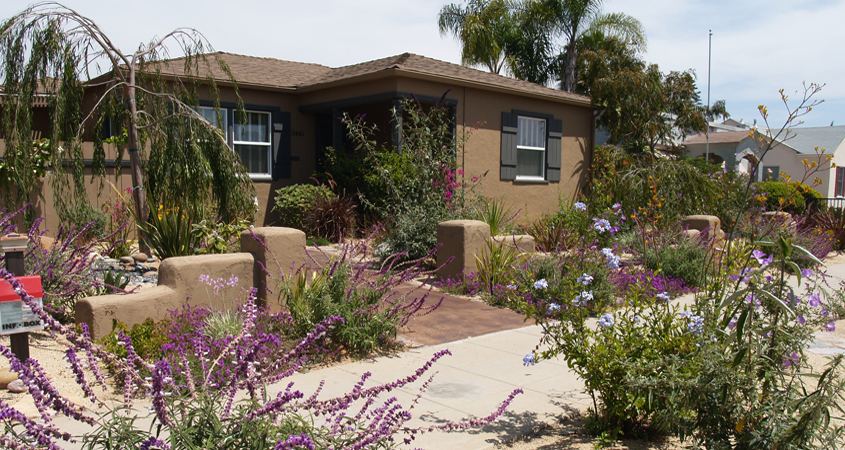Unused Pool Transformed into Helix Water District 2021 Landscape Contest Winner
Mount Helix homeowner Rosalie Dosik turned her unused pool into a waterwise backyard oasis and the winning project in the Helix Water District 2021 WaterSmart Landscape Contest. The annual competition recognizes outstanding water-wise residential landscapes based on overall attractiveness, design, efficient irrigation, and appropriate plant selection and maintenance.

The original backyard with the unused pool. Photo: Helix Water District
Dosik’s bright and textured landscape represents years of dedicated passion for gardening and water-efficient plants. The garden features an Asian-fusion theme complete with wooden structures, pathways, rock, and vibrant color. It uses many drought-tolerant plant species well adapted for the San Diego region’s semi-arid region climate.
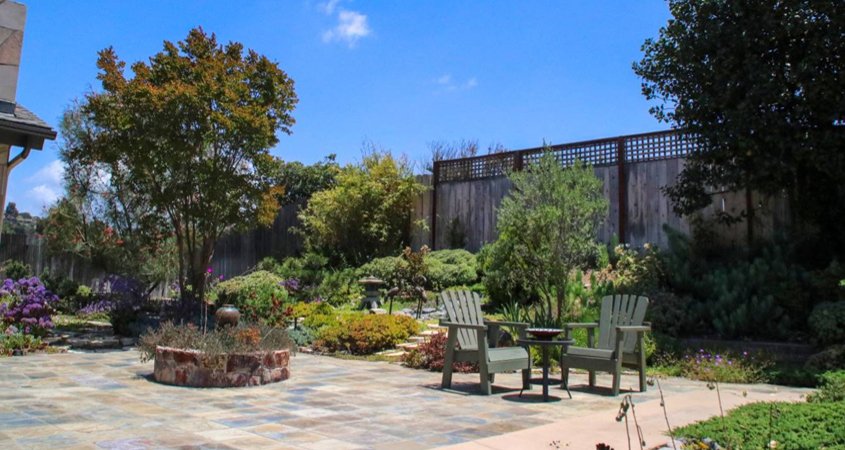
The transformed backyard with the unused pool filled in. Photo: Helix Water District
When the Dosiks bought their house in 1997, a large pool filled the backyard. The pool evaporated quickly in the summer and overflowed towards the house during winter rains.
Rosalie Dosik wanted a landscape she could enjoy more than the rarely used pool. So in 2012, Dosik decided to have the pool demolished and filled with decomposed granite. After adding topsoil and completing her landscape design, she now enjoys it daily.
Water Conservation Garden provides inspiration
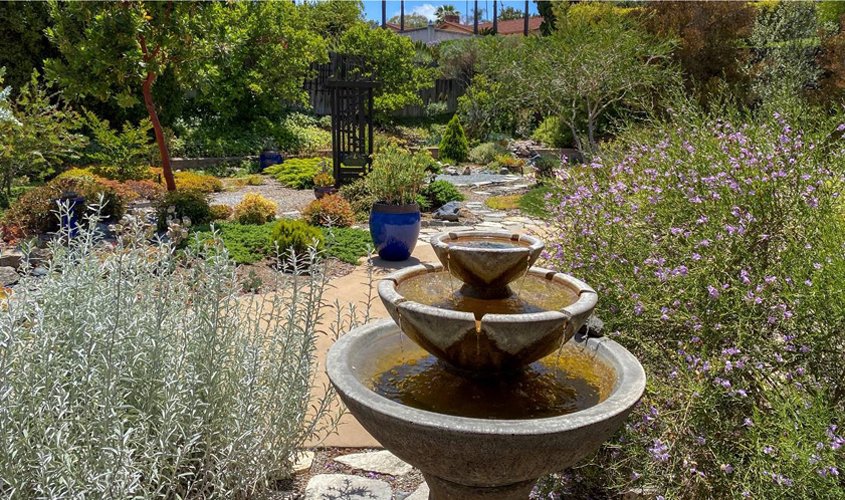
The garden includes meandering pathways, each offering different scenery, and views. Photo: Helix Water District
Several rock streams flow down the landscape into a gravel rock pond. The gravel area creates negative space, allowing the eye to rest so visitors can better sense and appreciate the landscape. True to its Asian theme, the garden includes meandering pathways, each offering different scenery, and views.
“Now, one can meander through the garden and enjoy the scenery,” said Rosalie Dosik. “There are birds and wildlife galore. The entire backyard is cooler and more serene. I have rabbits who visit each day, and I am even seeing monarch butterflies.”
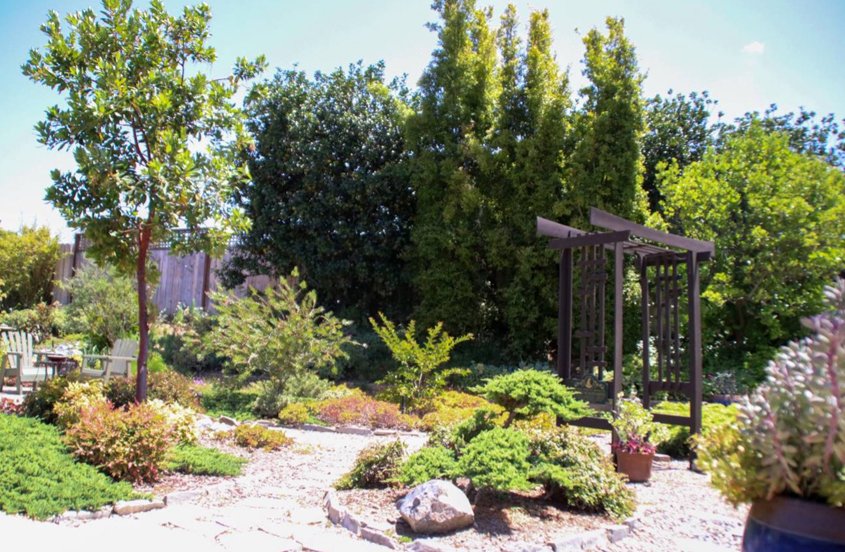
The Asian-theme garden attracts birds and butterflies. Photo: Helix Water District
Rosalie Dosik volunteers as a docent at the Water Conservation Garden. She discovered the garden in 2004 after visiting the adjacent Heritage of the Americas Museum at Cuyamaca College. On Dosik’s many return visits, she wrote down the names of plants she liked and started gardening with them at home.
Efficient irrigation uses gear-driven rotors to apply water to the densely planted areas. Narrow areas and potted plants use drip irrigation. A weather-based irrigation controller automatically adjusts for rain and weather.
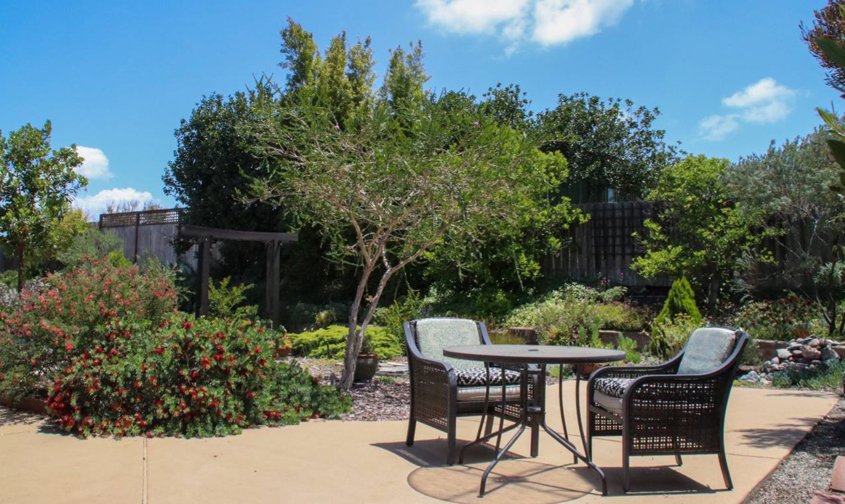
The Dosiks enjoy inviting guests over to enjoy their new outdoor space. Photo: Helix Water District
Dosik loves to have her friends over and entertain on the patio, where they can all enjoy the views of the garden.
“You can look left and right and just look at what is flowering,” said Dosik. “Of course, right now, everything is flowering.”
Dosik was recognized as the 2021 landscape contest winner at the Helix Water District’s virtual board meeting on June 23.
(Editor’s note: The Helix Water District is one of the San Diego County Water Authority’s 24 member agencies that deliver water across the metropolitan San Diego region.)


